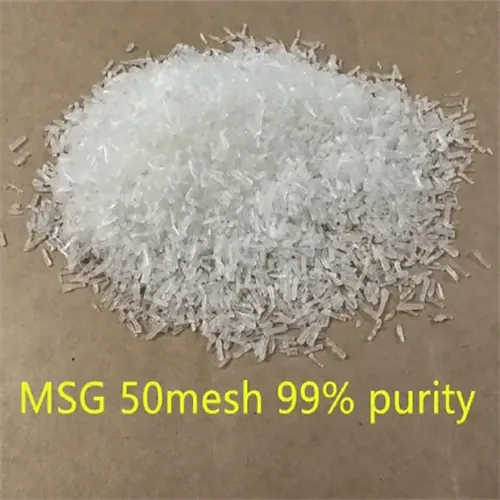Warning: Undefined array key "title" in /home/www/wwwroot/HTML/www.exportstart.com/wp-content/themes/1198/header.php on line 6
Warning: Undefined array key "file" in /home/www/wwwroot/HTML/www.exportstart.com/wp-content/themes/1198/header.php on line 7
Warning: Undefined array key "title" in /home/www/wwwroot/HTML/www.exportstart.com/wp-content/themes/1198/header.php on line 7
Warning: Undefined array key "title" in /home/www/wwwroot/HTML/www.exportstart.com/wp-content/themes/1198/header.php on line 7
- Afrikaans
- Albanian
- Amharic
- Arabic
- Armenian
- Azerbaijani
- Basque
- Belarusian
- Bengali
- Bosnian
- Bulgarian
- Catalan
- Cebuano
- China
- China (Taiwan)
- Corsican
- Croatian
- Czech
- Danish
- Dutch
- English
- Esperanto
- Estonian
- Finnish
- French
- Frisian
- Galician
- Georgian
- German
- Greek
- Gujarati
- Haitian Creole
- hausa
- hawaiian
- Hebrew
- Hindi
- Miao
- Hungarian
- Icelandic
- igbo
- Indonesian
- irish
- Italian
- Japanese
- Javanese
- Kannada
- kazakh
- Khmer
- Rwandese
- Korean
- Kurdish
- Kyrgyz
- Lao
- Latin
- Latvian
- Lithuanian
- Luxembourgish
- Macedonian
- Malgashi
- Malay
- Malayalam
- Maltese
- Maori
- Marathi
- Mongolian
- Myanmar
- Nepali
- Norwegian
- Norwegian
- Occitan
- Pashto
- Persian
- Polish
- Portuguese
- Punjabi
- Romanian
- Russian
- Samoan
- Scottish Gaelic
- Serbian
- Sesotho
- Shona
- Sindhi
- Sinhala
- Slovak
- Slovenian
- Somali
- Spanish
- Sundanese
- Swahili
- Swedish
- Tagalog
- Tajik
- Tamil
- Tatar
- Telugu
- Thai
- Turkish
- Turkmen
- Ukrainian
- Urdu
- Uighur
- Uzbek
- Vietnamese
- Welsh
- Bantu
- Yiddish
- Yoruba
- Zulu
Dec . 03, 2024 19:15 Back to list
Safety and Efficacy of Propylene Glycol Preservatives in Cosmetic Formulations
The Safety of Propylene Glycol-Based Preservatives in Cosmetics
In recent years, consumers have become increasingly aware of the ingredients used in their cosmetics and personal care products. Among these ingredients, propylene glycol has garnered attention as a common preservative. Understanding the use of propylene glycol, its safety profile, and its role in cosmetics is crucial for informed consumer choices.
What is Propylene Glycol?
Propylene glycol is a synthetic organic compound derived from petroleum. It is a colorless, odorless liquid that is hygroscopic, meaning it attracts moisture. This property makes it an effective ingredient in various cosmetic formulations. Its primary functions include acting as a humectant, solvent, and preservative. By retaining moisture, propylene glycol helps to keep skin hydrated, improves the texture and stability of products, and extends shelf life by inhibiting the growth of harmful microorganisms.
The Role of Preservatives in Cosmetics
Preservatives are essential in cosmetic formulations. They prevent the growth of bacteria, mold, and yeast, which can spoil products and pose health risks to consumers. While many consumers may prefer preservative-free products, completely eliminating preservatives is not viable for most formulations. Therefore, the choice of preservative is critical to maintaining product safety while also meeting consumer demand for gentler and safer ingredients.
Safety Concerns and Regulatory Oversight
The safety of propylene glycol in cosmetics has been evaluated by various regulatory agencies, including the U.S. Food and Drug Administration (FDA) and the Cosmetic Ingredient Review (CIR) Expert Panel. According to these evaluations, propylene glycol is generally recognized as safe when used in concentrations typically found in cosmetics. However, as with any ingredient, individuals may experience sensitivities or allergies. It is important for consumers to conduct patch tests, especially if they have sensitive skin or known allergies.
'propylene glycol-based preservatives in cosmetics safe and ...'

The permissible concentrations of propylene glycol in cosmetics are regulated, and manufacturers must adhere to strict guidelines to ensure consumer safety. Products containing this ingredient are often marked with a list of components, allowing consumers to make more informed choices. Awareness of individual skin types and needs paves the way for better product selection.
Comparing Propylene Glycol to Other Preservatives
While preservatives serve a crucial role, there is a growing trend toward choosing products with fewer synthetic ingredients. As a result, many consumers are seeking natural alternatives to traditional preservatives. Some natural preservatives may be less effective than synthetic ones, leading to a safety concern regarding product spoilage and contamination.
Unlike some other preservatives, which may be associated with higher instances of irritation or allergic reactions (such as parabens or formaldehyde-releasing preservatives), propylene glycol is typically well-tolerated when used appropriately. This makes it a preferred choice for many formulators aiming to balance efficacy and safety.
Conclusion
In conclusion, propylene glycol-based preservatives in cosmetics serve an essential function, protecting products from microbial contamination while enhancing skin hydration. Regulatory bodies have deemed it safe for use in skincare and cosmetic products when formulated correctly. However, awareness and understanding of individual skin sensitivities are pivotal.
As consumers continue to seek transparency in cosmetic ingredients, it is important to remember that the safety of a product is not solely determined by its additive components, but by their formulation as a whole. For those concerned about propylene glycol or any other ingredient, education and awareness are paramount. Always check product labels, conduct patch tests, and consult with professionals if unsure about particular products. In doing so, consumers can align their personal care choices with their values and skin health needs.
Latest news
-
Certifications for Vegetarian and Xanthan Gum Vegetarian
NewsJun.17,2025
-
Sustainability Trends Reshaping the SLES N70 Market
NewsJun.17,2025
-
Propylene Glycol Use in Vaccines: Balancing Function and Perception
NewsJun.17,2025
-
Petroleum Jelly in Skincare: Balancing Benefits and Backlash
NewsJun.17,2025
-
Energy Price Volatility and Ripple Effect on Caprolactam Markets
NewsJun.17,2025
-
Spectroscopic Techniques for Adipic Acid Molecular Weight
NewsJun.17,2025

